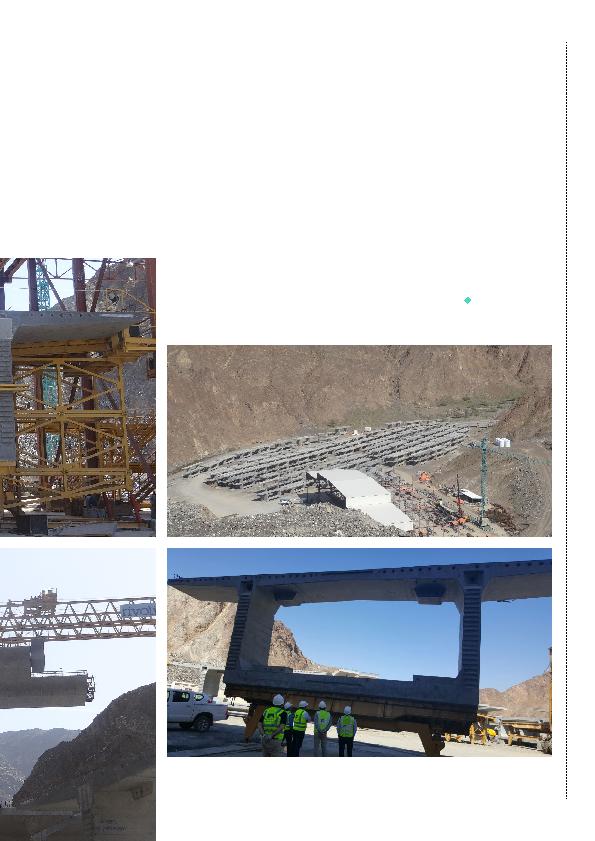
11
l
In balanced cantilevering, segments are erected
symmetrically from each side of the pier. A launching
gantry is used due to accessibility constraints
(Figure 5).
end faces of the segments were lightly sandblasted
where needed. Sandblasting removes deleterious
material and provides a good key for the epoxy glue
to spread evenly over the matching faces. Then, the
segment was positioned against the already erected
portion of the deck with epoxy glue spread evenly
over the matching faces. After that, temporary
pre-stress was applied to hold the segment in
place. The epoxy helps lubricate the joint during
erection, allowing the segment to slide into position.
structural continuity between the segments.
the bridge. When the free cantilever reached 45 m (the
bridge's mid-span), it got connected to the opposing
cantilever from the adjacent pier by an in-situ concrete
stitch. Then, pre-stressing tendons were installed along
the length of the span and across it.
in the joints, the ultimate design of the concrete box is
similar to an in-situ box girder. Since the epoxy creates
a bond of greater strength than the concrete itself, the
ultimate shear checks are carried out as if the deck were
monolithic.
Because the presence of the joints creates a discontinuity
in the longitudinal reinforcement, the joints had to be kept
in compression under all loading conditions. Also, shear
keys were placed on the surface of the joint (Figure 6) to
help align the segments during erection and to transfer the
shear forces before the epoxy has set.